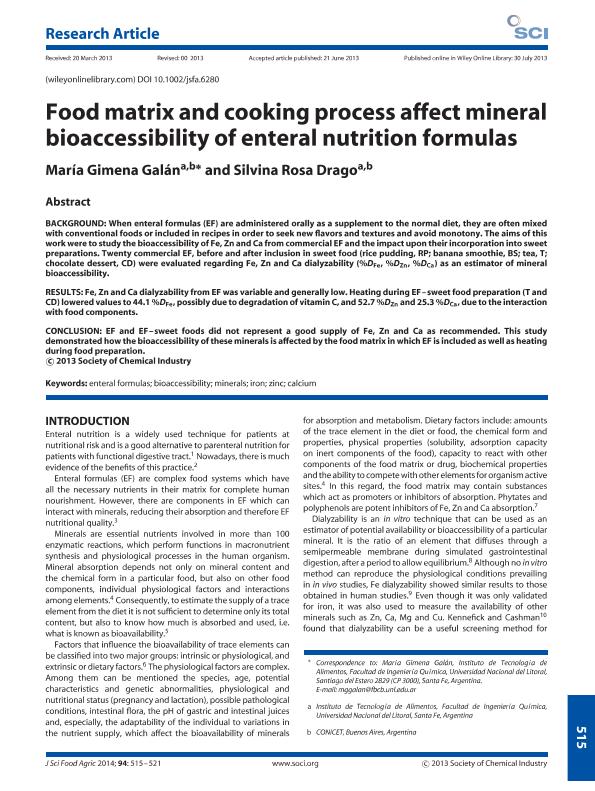Artículo
Food matrix and cooking process affect mineral bioaccessibility of enteral nutrition formulas
Fecha de publicación:
02/2014
Editorial:
Wiley Blackell Publishing Inc
Revista:
Journal of the Science of Food and Agriculture
ISSN:
1097-0010
Idioma:
Inglés
Tipo de recurso:
Artículo publicado
Clasificación temática:
Resumen
BACKGROUND: When enteral formulas (EF) are administered orally as a supplement to the normal diet, they are often mixed with conventional foods or included in recipes in order to seek new flavors, textures and avoid monotony. The aims of this work were to study the bioaccessibility of Fe, Zn and Ca from commercial EF and the impact upon their incorporation into sweet preparations. Twenty commercial EF, before and after the inclusion in sweet food (rice pudding: RP, banana smoothie: BS, tea: T and chocolate dessert: CD) were evaluated regarding Fe, Zn and Ca dialyzability (%DFe, %DZn, %DCa) as estimator of mineral bioaccessibility. RESULTS: Fe, Zn and Ca dialyzability from EF was variable and generally low. Heating during EF-sweet food preparation (T and CD) lowered 44.1 %DFe, possibly due to degradation of vitamin C, and 52.7 %DZn and 25.3 %DCa, due to the interaction with food components. CONCLUSION: EF and EF-sweet foods did not make a good supply of Fe, Zn and Ca, as it is recommended. This study demonstrated how the bioaccessibility of these minerals is affected for food matrix in which EF is included as well as the heating during food preparation.
Palabras clave:
ENTERAL FORMULAS
,
BIOACCESSIBILITY
,
MINERALS
,
IRON
,
ZINC
,
CALCIUM
Archivos asociados
Licencia
Identificadores
Colecciones
Articulos(CCT - SANTA FE)
Articulos de CTRO.CIENTIFICO TECNOL.CONICET - SANTA FE
Articulos de CTRO.CIENTIFICO TECNOL.CONICET - SANTA FE
Citación
Galan, Maria Gimena; Drago, Silvina Rosa; Food matrix and cooking process affect mineral bioaccessibility of enteral nutrition formulas; Wiley Blackell Publishing Inc; Journal of the Science of Food and Agriculture; 94; 3; 2-2014; 515-521
Compartir
Altmétricas




